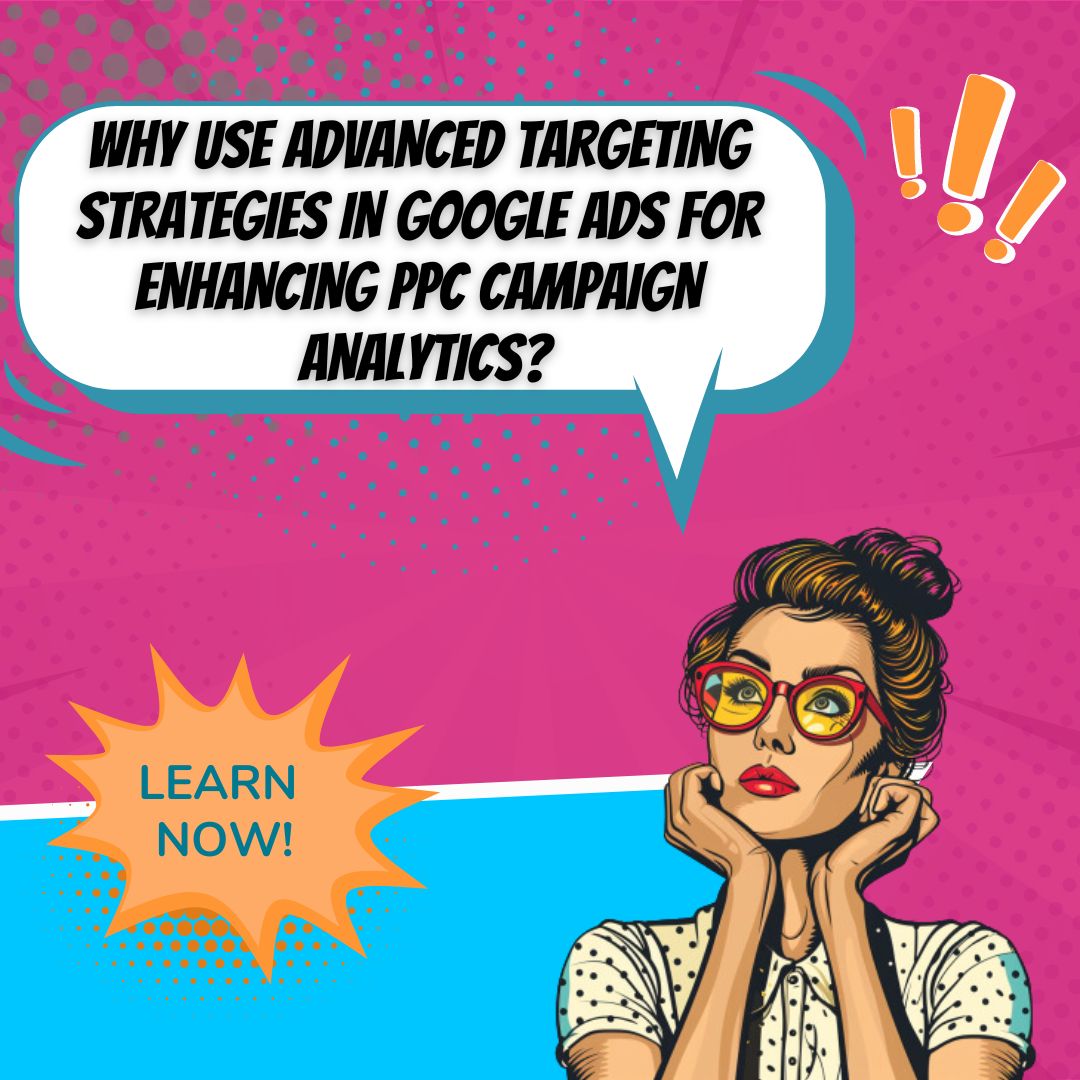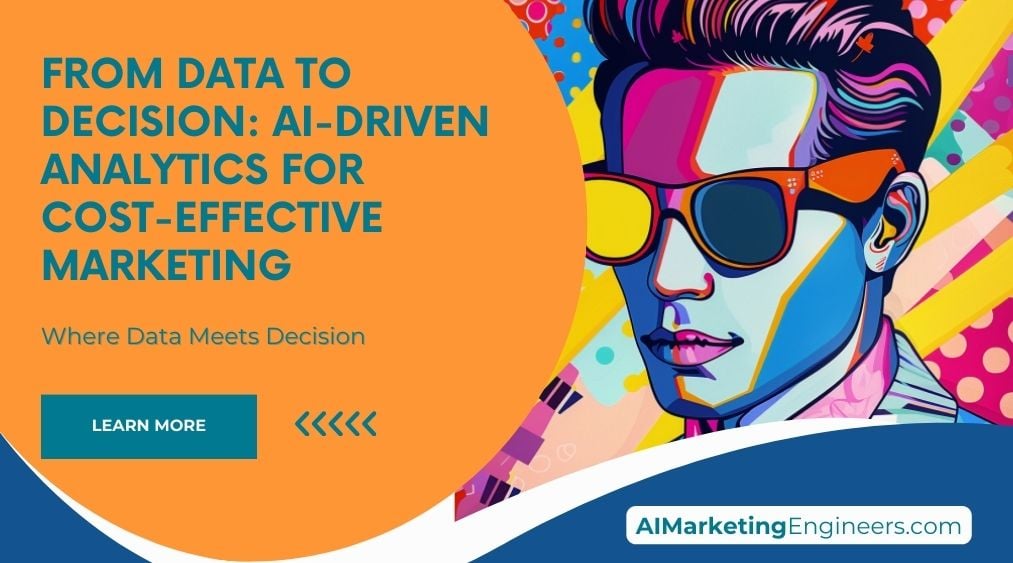Key Takeaways
✅ Demographic Targeting: One of the driving forces behind a successful PPC campaign is tailoring ads to your specific audience. With Google Ads, you're able to target demographics such as age, gender, and income, which can significantly elevate campaign relevance and efficiency. Statistics show personalized campaigns can boost ad performance by up to 5 times. When you focus your efforts, you reduce waste and enhance the pull of your messages.
✅ Audience Segmentation and Reporting: Mastering Google Ads entails a deep dive into data. Proper audience segmentation can lead to a profound understanding of your target groups, while thorough reporting paves the way for refinement and surgical precision in ad delivery. For instance, segmented email campaigns note as much as a 760% increase in revenue. By leveraging similar granularity in Google Ads, you can craft messages with laser focus.
✅ Advanced Strategies and Customization: Advanced techniques in audience targeting can be game changers that set you apart from the competition. Custom segments, combined with RLSAs, can not only bring in a surge of relevant traffic but also streamline your spending. After all, why cast a wide net when a spear will do? Businesses adopting advanced strategies report up to 300% increase in conversion rates. By honing in on these tactics, you're setting the stage for efficient scale and return on investment (ROI).

Introduction
Have you ever wondered why some ads seem to read your mind? Behind the scenes, there's a potent tool at work: Google Analysis with Audience Tracking. Picture this: you're a business owner who knows your product is stellar – but how do you find the people who need it most? Or perhaps you’re optimizing for PPC Campaign Analytics, searching for the delicate balance that spells 'profit'.
Now, imagine handing over a magnifying glass to your marketing team that can focus on your most coveted audience with extraordinary precision—this is the power of Google Ads Audience Tracking. In a digital age brimming with data, discerning and utilizing this information can revolutionize how you connect with potential customers.
But how exactly do you harness the power of audience targeting to not merely meet but exceed your ROI expectations? This article invites you to explore modern strategies, innovative techniques, and statistically-backed practices that could dramatically maximize your revenues. Get ready to uncover actionable insights and groundbreaking approaches that will empower you to not just compete, but dominate in the ever-evolving realm of digital advertising. Let's set the stage for unprecedented campaign success.
When launching an online ad campaign, knowing your audience is like mapping out a treasure hunt; it can lead directly to the treasure trove—your customers. Google Ads plays the role of a smart guide in this quest. Through the platform, you can split users into seven different audience segments: affinity (think of interest groups), custom (tailor-made groups), detailed demographics (age, gender, etc.), life events (significant personal changes), in-market (ready-to-buy signals), your data (based on interactions with your business), and similar audiences (akin to your existing customers). Selecting the right audience segment is crucial—it's like choosing the right bait for the fish you want to catch. For instance, if you're selling wedding cakes, wouldn't it make sense to target people who are preparing for a wedding?

Setting Up Audience Targeting in Google Ads
To begin your targeting journey, you can assign these audience segments to individual ad groups or campaigns. Imagine each ad group as a net designed for a specific kind of fish in the vast ocean of the internet. By visiting the "Audiences" tab in your Google Ads account, you can manage your chosen segments with a few clicks. It's like adjusting the nets to make sure you're catching the right fish—no dolphins or seagulls caught by mistake. You can select these groups based on user interests, habits, or how they have interacted with your brand—vital clues that point to who might want what you're selling.
Advanced Audience Targeting Strategies
For the experienced fisherman looking for a more significant catch, remarketing lists for search ads (RLSAs) or combining social audience data with RLSAs could be key. Strategies like using custom affinity audiences, leveraging in-market targeting, and dynamic keyword insertion allow your ads to reach a more focused group with laser precision. Think of it as the difference between casting a wide net and fishing with a spear—your ads become the spear, aimed at the heart of your target market. By also tailoring your efforts by day and time, you can optimize when your ads show up—just as you would choose the best time of day to go fishing for the best results.
Leveraging Custom Segments
Custom segments give advertisers the tools to create a specialized fishing pond, inviting only the fish you want. By using data from your business combined with insights from Google, you can create segments based on specific searches, app installs, or behaviors. Custom segments are valuable—they let you whisper directly into the ears of potential customers with a messaging that says, "This is exactly what you've been looking for."

Audience Reporting and Optimization
Beyond casting the net, you need to know what's happening under the water's surface. Google Ads offers detailed reporting on who's in your audience segments and who you've excluded. With this intelligence, you can refine your campaigns, recalibrating your equipment—your bids, targeting, and ad content—to better connect with your audience. It's a continuous process of audience optimization, as dynamic as the ocean’s currents, ensuring that no wave of opportunity passes you by.
Best Practices for Audience Targeting
When fishing in the vast sea that is Google Ads, best to start with a small selection of bait—a few audience segments—and see what nibbles back. From here, balance auto-generated suggestions from Google with your own chosen audiences, combining the platform's AI smarts with your business instincts. Observation mode can be a good starting point; think of this as sitting on the shore, watching the fish before making your move. And remember, sometimes it's as important to know which fish to let go, so excluding irrelevant audiences can save time and resources. As you monitor your captures—your campaign performance—be ready to adjust your strategies, ensuring that you continue to sail toward the most bountiful waters.
AI Marketing Engineers Recommendation
Recommendation 1: Leverage Detailed Demographics for Precise Audience Selection: Google Ads has evolved to offer Detailed Demographics, enabling advertisers to target audiences based on specific attributes like marital status, homeownership, or education. Businesses should take advantage of this by aligning their product or service with the demographic most likely to convert. For instance, data shows that users within a particular age group or income level might have a higher propensity to purchase certain types of products. By honing in on these demographics, companies can see a significant increase in click-through and conversion rates.

Recommendation 2: Utilize In-Market Audiences for Higher Conversion Potential: Staying ahead of the game means tapping into the powerful In-Market Audiences feature of Google Ads. This lets you target users who are actively researching and intending to buy the products or services you offer. Recent trends indicate that advertisers who employ In-Market Audiences often see a substantial boost in engagement, with some sectors experiencing over a 20% increase in conversion rates due to their high commercial intent. Integrating this with your PPC campaign analytics can yield insights into which audiences are most ready to make a purchase, allowing for refined targeting and better ad spend efficiency.
Recommendation 3: Apply Audience Observation to Gain Insights Without Restricting Reach: Take advantage of the Audience Observation tool within Google Ads for an in-depth understanding of how different audiences interact with your campaigns. By setting your chosen audiences to 'Observation,' you maintain a broad reach while gathering valuable data on their performance metrics. This approach offers the flexibility to assess the effectiveness of your targeting and adjust bids without limiting your ads’ visibility. The key benefit here is the ability to make informed decisions based on actual user interactions, and recent data indicates that advertisers who adapt their strategies based on observation insights can improve their ROI by up to 30%.
Relevant Links
- Conquer China's Digital Space: Master WeChat Marketing Today!
- Make Your Brand the Star of Short-Video Platforms in China!
- The Video Marketing Revolution in South Korea Revealed!
- Winning SEO Tactics for South Korea's E-Commerce Scene
- Decoding Chinese Consumer Behavior: Trends & Insights for 2024!
Conclusion
When it comes to Google Ads Audience Targeting, understanding and deploying the right segments is a game changer for any PPC campaign. Diving into the seven audience segments such as affinity or in-market audiences can help you reach people more inclined to engage with your brand. Monitoring the pulse of user interests, demographics, and behaviors gives you direct access to tailor content that lands well, and resonates deeply.
Setting up your campaign for success involves hand-picking your desired audience segments and laying out the digital pathway within the Audiences tab. There's plenty of room for finesse here, and those advanced audience targeting strategies like remarketing lists and custom affinity audiences aren't just buzzwords—they're tools to sharpen your campaign's edge, personalize the user experience, and drive engagement.
Custom segments, in particular, elevate the personal touch, turning broad data into a specific constellation of potential customers who share more than a passing interest in what you have to offer. And with Google Ads' robust reporting, you're never in the dark about who's seeing your ads and how they're responding. This is where the rubber meets the road: optimizing campaigns in real-time based on rich audience data.
Best practices for audience targeting are all about balance and refinement. Embrace the experimental spirit, start with a manageable number of segments, and scale up as your comfort with the analytics grows. Regular data reviews facilitate smart bids and exclusions that will keep your campaign lean, mean, and poised for conversion success.
Leverage Google Ads Audience Targeting to sharpen your campaign focus, improve ad relevance, and ultimately, amplify performance metrics. Remember, knowledge isn't just power—it's profit in the realm of PPC campaign analytics. Reflect on these points, evaluate your current strategies, and consider how a deeper dive into audience targeting can make a tangible difference in your Google Ads success.

FAQs
Question 1: What's the scoop on Audience Targeting in Google Ads?
Answer: Imagine you're at a farmer's market. Audience targeting is like making a beeline directly to the peach seller because you know that's your jam. Google Ads lets you do the same by showing your ads to folks who are most likely to be interested in what you're offering, based on what they're into, where they're standing in the crowd, and what they've been chatting about.
Question 2: How many flavors of audience segments do we get?
Answer: There's a whole smorgasbord of audience segments in Google Ads. From custom-made ones that fit like a glove to in-market segments hot off the press, and affinity groups that are like your long-lost friends. It's all about getting those ads out to the right people.
Question 3: How do I throw my hat in the audience targeting ring?
Answer: It's as simple as pie. Saunter into your Google Ads account, tip your hat to the Campaigns icon, and tug on that Audiences, keywords, and content dropdown. Click Audiences, pick your crowd, and voilà! You're all set.
Question 4: What's the deal with audience reporting?
Answer: Think of audience reporting as getting the lowdown on how your block party's going. Get the skinny on who rocked up, and which tunes were a hit. It's your go-to for keeping tabs on who's mingling with your ads.
Question 5: What's the skinny on handling demographic reports and targeting?
Answer: Head over to the Audiences tab, click on demographics, and pick your spyglass — campaign, ad group, or the whole neighborhood (account). That's where you can get a good look at who's been showing up and make any changes to keep the party jumping.
Question 6: Why should I give a hoot about audience ideas and search?
Answer: Ever been stumped for what to cook for dinner? Audience ideas and search is like finding a new recipe that wins over everyone at the table. It's all about discovering fresh crowds that'll get jazzed about your ads.
Question 7: How can I jazz up my audience targeting?
Answer: Keep an eagle eye on your ad shindig and be ready to switch up the playlist if the mood changes. Try new tactics, ditch what's not working, and focus your dough on the folks who are most into what you're laying down.
Question 8: Why mix audience targeting with other shindigs?
Answer: It's like getting the band back together. Mix in some sweet keyword tunes with the smooth rhythm of audience targeting, and you've got a real hit on your hands, something that resonates and has folks tapping their feet.
Question 9: How do I get savvy with performance metrics for my audience?
Answer: Just pick your vantage point — campaign look-out, ad group perch, or account overview — and take in the sights. See who's clicking, who's just looking, and where you're making your mark. It's about fine-tuning your act so the crowd keeps coming back for more.
Question 10: Should I invite the whole town or just a select few?
Answer: You could throw open the gates, but would everyone enjoy the party? Better to start with those who dig your scene and then invite more guests based on who's grooving to your beat.
Question 11: How do I make sure my targets and what I'm selling are in the same ballpark?
Answer: Choose your audience like you're crafting the guest list for a dinner party. You want people who'll appreciate your cooking. Target those who gel with your vibes. It's about creating harmony and skipping the awkward silences.
Question 12: What's the whisper about machine learning in Google Ads?
Answer: Imagine a crystal ball that can guess who's likely to swing by your shop. That's machine learning for you — a brainy tool in Google Ads that predicts which groups might just turn into your next best customers.

Academic References
- Search Engine Journal (2023). The Complete Guide to Google Ads Audience Targeting in 2023. This guide traverses every facet of Google Ads audience targeting, shedding light on choosing the right audiences, crafting successful campaigns, and tuning bids and budgets to elevate the return on investment.
- Google Add Audience Targeting to an Ad Group or Campaign - Google Help. A procedural article by Google itself providing a granular walkthrough on how you can infuse audience targeting into your Google Ads endeavours, which is essential for optimizing a campaign's outreach.
- Dischler, J. (2021). Google Ads Audience Targeting: All 15 Options Explained. An illuminating piece that decodes each of the 15 Google Ads audience targeting options to aid marketers in picking the right one for their PPC campaigns and thus underpinning their efficacy.
- Google About Audience Reporting - Google Ads Help. This Google help document unravels the intricacies of audience reporting within Google Ads, highlighting the integrative reporting on various key performance metrics and their pivotal role in refining audience targeting strategies.
- Reddit Community (2022). Using Audience Targeting on Google Search Ad Campaigns - Reddit. In discussions amongst Reddit users, the potency of audience targeting tactics in Google Search ad campaigns is unravelled, emphasizing the relentless pursuit of perfecting targeting strategies to augment ROI.







